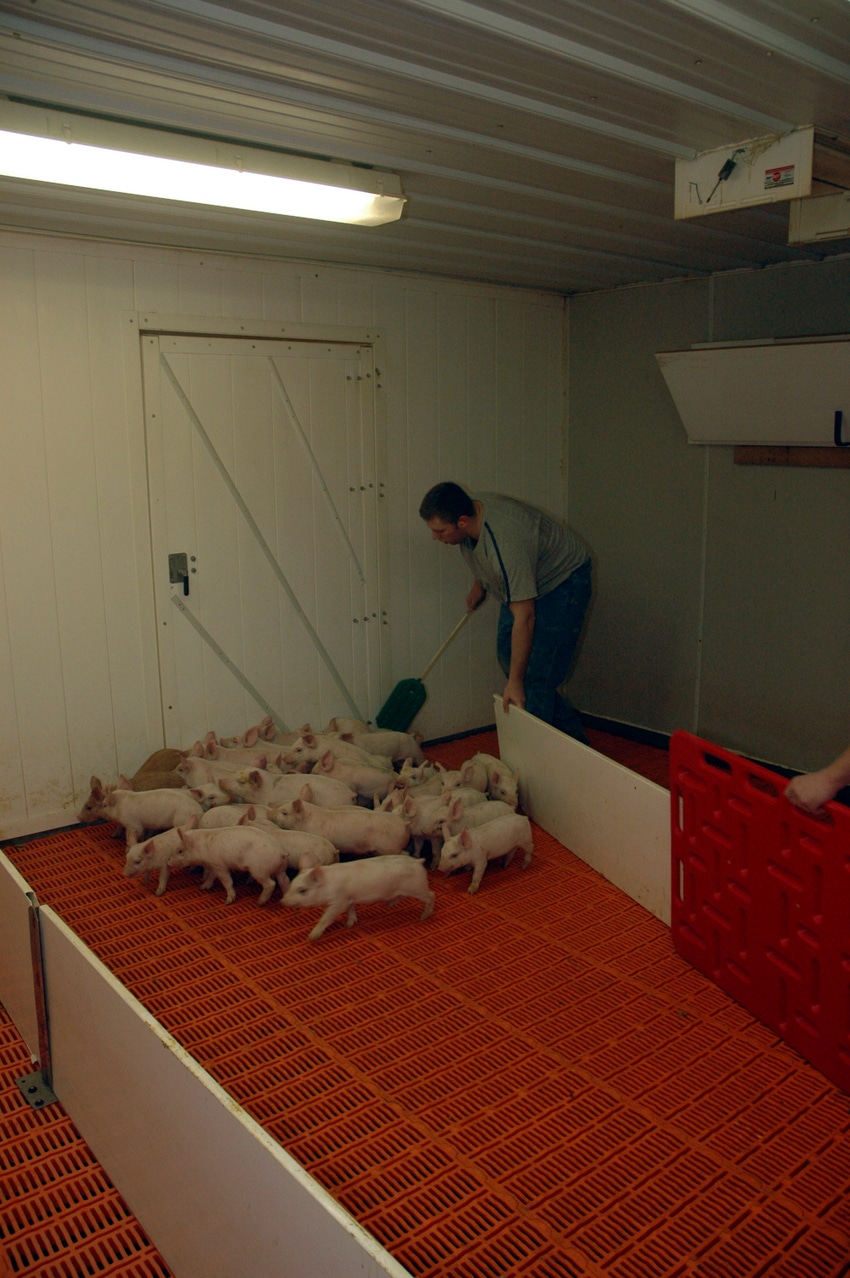Good gut health in pigs is the first step to better performance and higher returns. Here are 4 key factors to take into consideration.
December 24, 2013

Good gut health, especially in younger pigs has a significant benefit to pig health and performance. “Maintaining good gut health helps set the pig up for life,” says Ernie Hansen, Hubbard Feeds Swine Nutrition and Technical Services Manager. “The gut is the largest organ that helps with the immune function. It’s the pigs’ first line of defense and should receive the highest priority. Without good gut health, growth doesn’t occur.”
Optimizing gut health starts in the farrowing crate, where it is vital to ensure each piglet has access to colostrum and milk. Improving the integrity of the gut wall increases nutrient absorption. Good gut health helps piglets get a good start in the nursery, and will also:
· Increase the beneficial micro-flora
· Reduce harmful bacteria
· Improve feed intake and average daily gain
· Lower piglet mortality
Here are some factors to take into consideration:
1. Nutrient Sources – gut integrity can be improved and maintained with proper selection of ingredients that prevent gut inflammation, increase growth of good bacteria, and decrease water loss. High quality animal proteins, low allergenic soy proteins, highly digestible carbohydrates and unique gut environment enhancers together make a feed program that provides the solid foundation for health and growth. Steam rolled oats, for example, are a highly digestible carbohydrate source that has water retention properties which helps stool condition.
2. Gut MicroFlora – promoting the growth of beneficial gut bacteria like Lactobacillus and Bifidobacteria reduces the population of harmful bacteria through competition for nutrients. A healthy gut flora will also have increased production of butyrate which is an energy source to the mucosa and has antimicrobial activity.
3. Tight Junctions- normal gut epithelial cells are close together with “tight junctions” which provide a protective barrier in the gut. Damage to these epithelial cells through inflammation causes “leaky junctions” which allow undigested food particles and toxins to pass through the gut wall into the bloodstream.
4. Feed Intake -research shows that there is less intestinal damage in weaned pigs when feed intake is increased. Higher feed intake can lead to longer intestinal villi, improved absorption of nutrients and the reduction of disease-causing bacteria like E. coli. Hubbard Feeds research on a newly introduced, all natural fermentation product called GutCIE (Gut Conditioner, Intake Enhancer) has shown to increase feed intake 5% and ADG 5% the first 21 days in the nursery compared to control.
“Good gut health allows pigs to thrive through the nursery and that effect is multiplied as they move through the finisher,” says Dr. Stewart Galloway, Hubbard Feeds Senior Swine Field Nutritionist. “Just in gain alone, the multiplier effect of an extra 1.7 lb. heavier pig leaving the nursery could allow you to market a pig up to three days earlier.”
Galloway says better gut health leads to less scours, fewer treatments and fewer fallback pigs which can mean an increase in full-valued pigs at market. In addition, fewer treatments and better overall health also improve animal welfare and reduce labor time and costs of individual treatments.
Given the projection of positive returns in the hog market for the next 6 months, livability should equal profitability. Good gut health is the first step to better performance and higher returns.
You May Also Like



